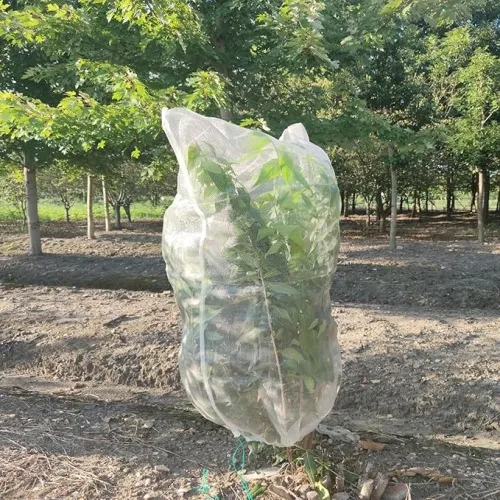-
 Afrikaans
Afrikaans -
 Albanian
Albanian -
 Amharic
Amharic -
 Arabic
Arabic -
 Armenian
Armenian -
 Azerbaijani
Azerbaijani -
 Basque
Basque -
 Belarusian
Belarusian -
 Bengali
Bengali -
 Bosnian
Bosnian -
 Bulgarian
Bulgarian -
 Catalan
Catalan -
 Cebuano
Cebuano -
 China
China -
 Corsican
Corsican -
 Croatian
Croatian -
 Czech
Czech -
 Danish
Danish -
 Dutch
Dutch -
 English
English -
 Esperanto
Esperanto -
 Estonian
Estonian -
 Finnish
Finnish -
 French
French -
 Frisian
Frisian -
 Galician
Galician -
 Georgian
Georgian -
 German
German -
 Greek
Greek -
 Gujarati
Gujarati -
 Haitian Creole
Haitian Creole -
 hausa
hausa -
 hawaiian
hawaiian -
 Hebrew
Hebrew -
 Hindi
Hindi -
 Miao
Miao -
 Hungarian
Hungarian -
 Icelandic
Icelandic -
 igbo
igbo -
 Indonesian
Indonesian -
 irish
irish -
 Italian
Italian -
 Japanese
Japanese -
 Javanese
Javanese -
 Kannada
Kannada -
 kazakh
kazakh -
 Khmer
Khmer -
 Rwandese
Rwandese -
 Korean
Korean -
 Kurdish
Kurdish -
 Kyrgyz
Kyrgyz -
 Lao
Lao -
 Latin
Latin -
 Latvian
Latvian -
 Lithuanian
Lithuanian -
 Luxembourgish
Luxembourgish -
 Macedonian
Macedonian -
 Malgashi
Malgashi -
 Malay
Malay -
 Malayalam
Malayalam -
 Maltese
Maltese -
 Maori
Maori -
 Marathi
Marathi -
 Mongolian
Mongolian -
 Myanmar
Myanmar -
 Nepali
Nepali -
 Norwegian
Norwegian -
 Norwegian
Norwegian -
 Occitan
Occitan -
 Pashto
Pashto -
 Persian
Persian -
 Polish
Polish -
 Portuguese
Portuguese -
 Punjabi
Punjabi -
 Romanian
Romanian -
 Russian
Russian -
 Samoan
Samoan -
 Scottish Gaelic
Scottish Gaelic -
 Serbian
Serbian -
 Sesotho
Sesotho -
 Shona
Shona -
 Sindhi
Sindhi -
 Sinhala
Sinhala -
 Slovak
Slovak -
 Slovenian
Slovenian -
 Somali
Somali -
 Spanish
Spanish -
 Sundanese
Sundanese -
 Swahili
Swahili -
 Swedish
Swedish -
 Tagalog
Tagalog -
 Tajik
Tajik -
 Tamil
Tamil -
 Tatar
Tatar -
 Telugu
Telugu -
 Thai
Thai -
 Turkish
Turkish -
 Turkmen
Turkmen -
 Ukrainian
Ukrainian -
 Urdu
Urdu -
 Uighur
Uighur -
 Uzbek
Uzbek -
 Vietnamese
Vietnamese -
 Welsh
Welsh -
 Bantu
Bantu -
 Yiddish
Yiddish -
 Yoruba
Yoruba -
 Zulu
Zulu
Bird Protection Netting Solutions for Safe and Sustainable Environments
Avian Netting A Comprehensive Solution to Bird Management
Birds, with their graceful flight and melodic songs, have always held a special place in our hearts and ecosystems. However, in certain contexts, they can become significant nuisances—especially in agricultural settings, urban areas, and around commercial properties. This is where avian netting comes into play as an effective, eco-friendly solution for managing bird populations while minimizing human-bird conflicts.
Understanding Avian Netting
Avian netting is a physical barrier that is specifically designed to exclude birds from particular areas. Made from lightweight, durable materials like polypropylene or polyethylene, these nets are engineered to withstand various weather conditions while being safe for wildlife. The mesh size is often selected according to the targeted bird species, ensuring that the intended birds cannot enter without harming other forms of wildlife.
Applications of Avian Netting
1. Agricultural Protection One of the primary uses of avian netting is in agriculture, where crops are often targets for foraging birds. From vineyards to orchards and vegetable farms, bird damage can result in significant financial losses. By installing avian nets over these crops, farmers can protect their harvests from birds like starlings, crows, and sparrows. This not only secures the crop yield but also reduces the need for chemical deterrents, promoting a more sustainable approach to farming.
2. Urban Environments In cities, bird-related issues often manifest as unsightly messes and potential health hazards due to droppings. Avian netting is used extensively on buildings, rooftops, and balconies to prevent birds from nesting or roosting in undesirable areas. This helps in maintaining cleanliness and reduces the risks associated with bird excrement, which can harbor various diseases.
3. Wildlife Rehabilitation Avian netting also finds its applications in wildlife rehabilitation centers, where it is used to create safe enclosures for injured or recuperating birds. The netting allows for airflow and sunlight while keeping the birds contained and safe from predators, facilitating a conducive environment for recovery.
Benefits of Avian Netting
avian netting

- Humane Solution Unlike traps or poisons, avian netting provides a humane method of controlling bird populations without causing harm to the birds themselves. It allows them to coexist in their natural habitats while keeping them away from vulnerable areas.
- Durability and Cost-Effectiveness Made from high-quality materials, avian nets are designed for longevity, often lasting several years with minimal maintenance. This reduces the need for repeated purchases and installations, resulting in cost savings over time.
- Versatile Design Available in various sizes and configurations, avian netting can be customized to fit different spaces, making it an adaptable solution for various environments, whether residential, commercial, or agricultural.
Considerations When Using Avian Netting
While avian netting is an effective bird management tool, certain considerations should be taken into account. The installation should be carefully planned to ensure that the nets are not only effective but also humane, allowing for birds to find alternative feeding locations without becoming trapped. Regular inspections are necessary to ensure that the netting remains in good condition, and potential gaps or tears should be repaired promptly.
Additionally, it is important to comply with local wildlife regulations, as some birds may be protected species. Engaging with wildlife experts or environmental organizations can provide guidance on best practices for bird management and netting installations.
Conclusion
Avian netting is a practical and humane solution for addressing bird-related issues across various sectors. Its effectiveness lies not only in its ability to protect agricultural crops and urban spaces but also in its potential to foster a respectful coexistence between humans and wildlife. As we continue to navigate our relationship with nature, avian netting stands out as a sustainable choice, ensuring that we can enjoy the beauty of birds without compromising our livelihoods or health.
-
Shipping Plastic Bags for Every NeedNewsJul.24,2025
-
Safety Netting: Your Shield in ConstructionNewsJul.24,2025
-
Plastic Mesh Netting for Everyday UseNewsJul.24,2025
-
Nylon Netting for Every UseNewsJul.24,2025
-
Mesh Breeder Box for Fish TanksNewsJul.24,2025
-
Expanded Steel Mesh Offers Durable VersatilityNewsJul.24,2025











